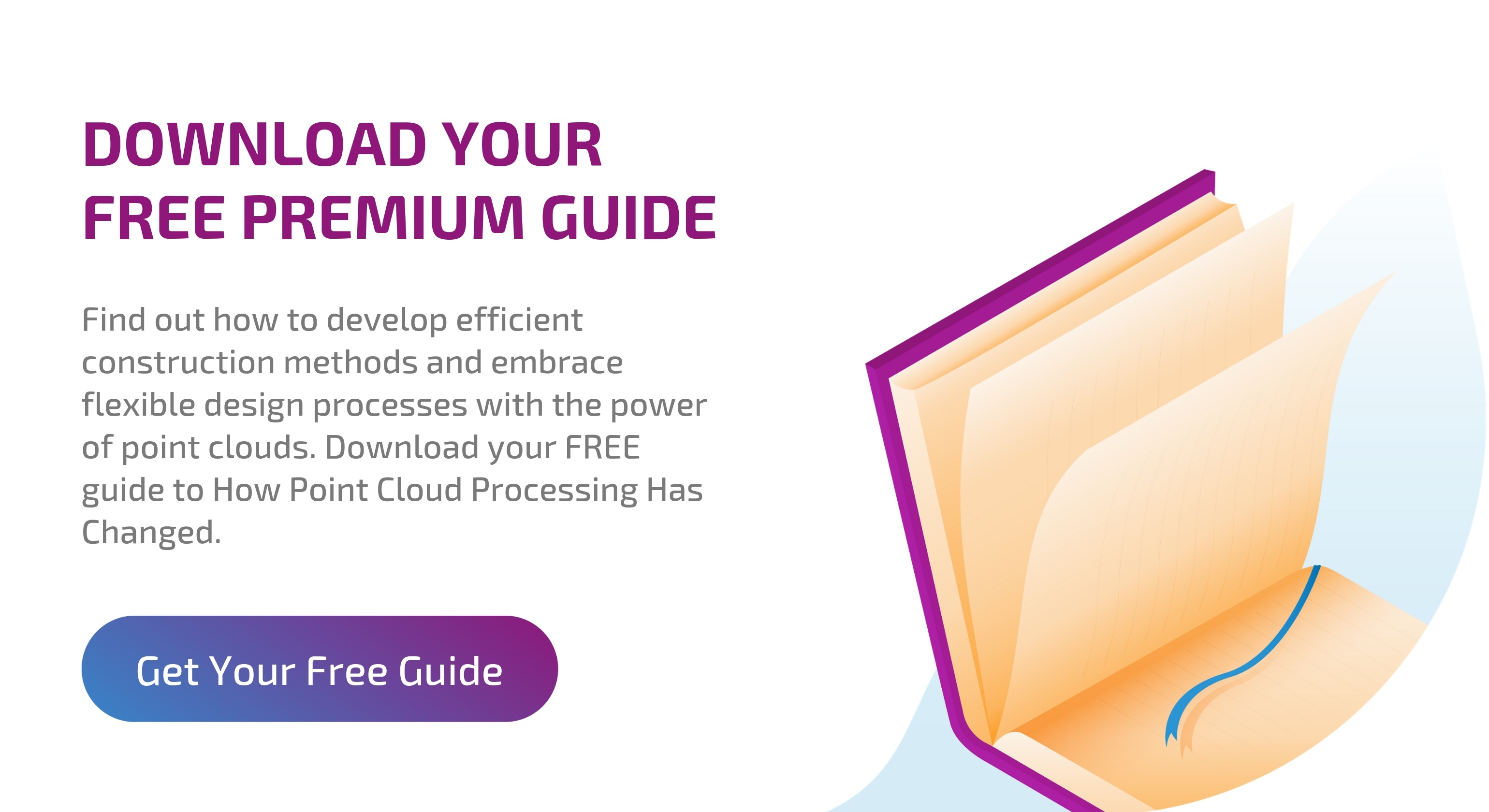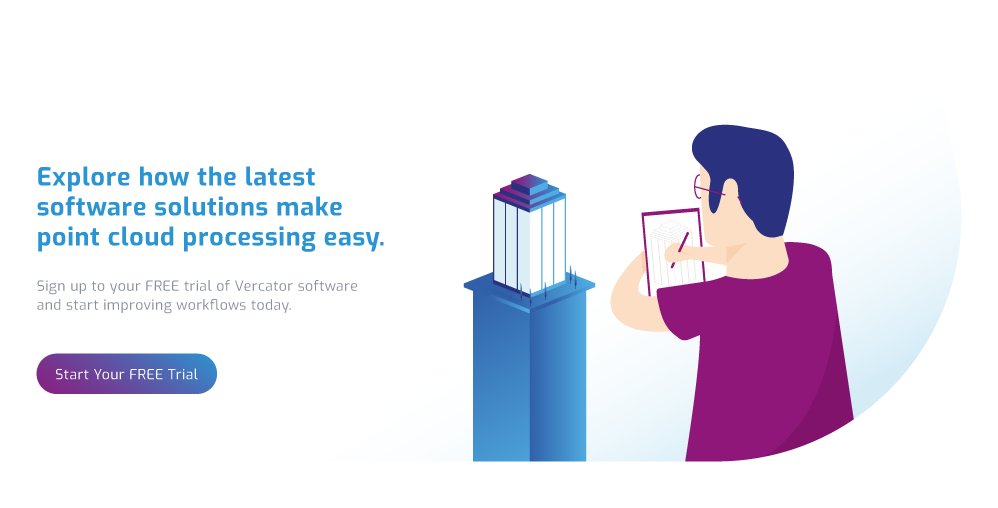5 steps to modernising your land surveying business

The digital transformation of the construction industry continues apace — keeping up with the new techniques and technologies is a major task in itself. But while the technology will bring potential savings in time and increases in accuracy, it is also transforming what surveying actually is. Handled correctly, this technology can transform your business — increasing margins, lowering cost, and enabling you to move into new and exciting areas as the need for digital scanning moves beyond construction itself.
So where to start? Here is a list of five areas to be on top of in order to embrace the digital change that is happening all around us with confidence.
1. Update your point cloud registration technology
As you may know, registration is one of the most time-consuming and labour intensive elements of transforming laser scans into finished point clouds. Unsurprisingly, improving the registration process has been a focus of tech companies for years, and real advances have occurred that are worth your attention.
By representing features in the natural environment as vectors, improvements can be made to how scans are assessed by software, allowing for more robust outcomes at faster speeds with fewer manual steps and more automation. The takeaway is that by accessing the most advanced multi-stage, vector-based processing software, you can decrease processing time by 40%-80%, front load all manual processes and leave your scans to carry out hands-free registration processing. Let’s look at how this works.
How does it work?
1. Rotational Alignment
Standard registration software would attempt to look for natural overlapping features within scans by assessing point clusters within adjacent point clouds. However, position data of the scanner can be used to extrapolate each point into a directional vector with a normalised length of one. This allows entire point clouds to be collapsed into ‘vector-spheres’ while retaining identifying rotational characteristics. By placing adjacent ‘vector spheres’ within one another, rotational alignment can be obtained quickly and independently. This is done simply by rotating one sphere relative to the other until the two patterns match to align it with the other scan.
2, Horizontal Translation Alignment
Once rotational alignment is achieved, it becomes far simpler to achieve both horizontal and vertical alignments. To determine how much horizontal movement the scans require, the point cloud scans are projected, collapsed or squashed to form a 2D plan view. When the points collapse onto the plane, vertical features which have millions of points on them will collapse to form a line on the plane. This creates a point density image. All that is then needed is to slide the image for one scan over that of the adjacent scan and calculate the degree of match to find the position of best alignment.
3. Vertical Translation Alignment
To find the vertical shift or translation, the point clouds of the two scans are separately projected, collapsed or squashed onto a vertical rod. Flat floors with millions of points on them collapse to very high densities of points on the rod, and similarly with flat ceilings. The point density pattern of one scan is slid over the point density pattern of the other scan to obtain the position of best match.
The greater simplicity of each of these three stages (rotational, horizontal and vertical) allows each to be approached with greater automation and at greater speed. It even enables a decrease in the required scan overlap for targetless registration alignment to as little as 30%.
2. Embrace targetless registration
Until now, both target-based surveying and targetless registration have brought pros and cons. Targets are reliable and robust. More importantly, even though that causes delays in the field, they traditionally lead to more robust registration back in the office and allow for external survey control to be used to ensure global accuracy of the data.
The missing element for the development of practical targetless registration has been the availability of reliable automated processing software. Now that we can remove the need to be manually involved in the registration and alignment process, the problems created by slower targetless registration are removed, reducing scan time without increasing registration time.
While targets are still recommended for control, overall fewer are needed and surveyors can embrace targetless registration techniques under almost all circumstances. Algorithm advances have even dropped the required scan overlap for targetless registration from 60% to as little as 30% in distinct environments.
There is no longer a need to weigh time saved in the field against time spent processing in the office. In fact, the speed of processing (and access to cloud-enabled point cloud registration software) has created the possibility of onsite registration and alignment of targetless scans. A 16-scan file of a meeting room, for example, can now be processed in as little as 14 minutes — an 88% reduction from traditional processing time.
This greatly expands the efficiency with which surveyors can do their job. Smaller teams can make more scans faster and then queue up those scans for unsupervised processing and registration.
3. Bring your point clouds into the cloud
Cloud processing on services such as AWS, Microsoft Azure, Google or IBM Cloud allows a surveyor to upscale or downscale IT requirements as and when required to accommodate increased business needs or changes. You can now support your business growth without constantly having to buy new hardware or update your existing IT infrastructure. The processing capabilities available are also being upgraded constantly so you can match your needs to best fit configurations.
One of the game-changing benefits of cloud computing is the ability to change the way we do things. With cloud comes the ability to implement what is known as “agile” methods — basically to try things out in a safe and speedy way, learn from what happens (fail fast) and try again.
Cloud enables a secure way to communicate with rapid response. You don’t have to be in the office — you are not constrained to one or several machines. For multiple offices, collaboration becomes easier with data held in a cloud service.
The biggest possibilities offered by the cloud, however, come when using point cloud processing software which supports multiple processing cores (and multithreaded processors) to register multiple scans simultaneously. The best commercial processors, like the i9-7980EX, have 18 cores. With hyperthreading, that delivers 36 threads, or the ability to undertake the coarse registration of 36 scans simultaneously. That is a lot. However, with the cloud, there is really no limit to the number of threads you can access.
What the cloud offers is the theoretical potential to register a near infinite number of scans simultaneously. The practical limits of that will hinge on your bandwidth access and processing software. However, it is an exciting possibility for surveyors regularly dealing with projects ranging into the thousands of scans — even if it practically only means a jump from registering a few dozen scans simultaneously to a few hundred.
4. Integrate mobile surveying into your strategy
Vehicle-based mobile mapping systems rapidly acquire linear external assets by combining sensors. Due to this success, there has been a recent trend towards developing mobile capture solutions for other environments. This has manifested as drones in aerial capture but for terrestrial data two types have emerged: trolley based and human-carried systems.
Trolley based systems provide a stable platform and avoid placing the burden of carrying the weight of sensors on to the operator. Examples include instruments by Navvis and Viametris
Human-carried systems offer more flexibility as theoretically anywhere the operator can walk can be accessed for capture. This means areas that are impossible to scan with trolley systems or difficult with static tripod methods, such as stairwells, can be captured relatively easily. Examples include the GeoSlam products and the Leica Pegasus Backpack.
Currently the trade-off of these systems is speed of capture and mobility against a reduction in accuracy of the points collected; often in the centimetre range rather than millimetres as with static scanners. However, for some work this may be worth the investment.
In the future, as costs go down and demand for mobility increases, the ability to develop a hybrid of ground-based and aerial-based technology will present opportunities for even more accurate and efficient data collection. The faster surveyors and designers adapt to these advancements, the better positioned they will be to model and design the projects of the future.
5. Investigate how you fit in with BIM
BIM (Building Information Modelling) is a technology-driven method of collaborating on construction projects. Increasing the value of 3D modelling to engineering and construction teams, it is expanding the number of opportunities for surveyors to become integral parts of these projects — supplying the scans to inform BIM schematics, or cross-references outcomes with planning.
BIM is fast becoming an integral part of the lifecycle of many construction projects and is likely to become even more widely used over time.
Fundamentally, point clouds bring BIM (and other forms of computer models) in touch with physical space. Rather than simply remaining guides or theoretical representations, point clouds provide the ability to effectively import 3D physical space into a digital format and inform/augment your existing digital models.
The challenge with BIM adoption is not just to encourage surveyors to use newer technologies, but rather to convince them to start seeing it as a paradigm shift in the design and build process altogether. At its core, BIM is meant to transform how project teams work together on a job, from start to finish. Surveyors are part of that. You need to learn about BIM to learn about these possibilities.
Developing a modern digital business
The steps outlined pave the way for new working methods. By lowering barriers to capturing data onsite, increasing speed of alignment and providing collaboration for downstream analysis, many aspects of surveying will be transformed. The cost savings generated by these new techniques will open up many new opportunities for novel point cloud applications. New people will enter the market as point cloud producers and users. The challenge is determining how to best exploit these steps to improve processes that already exist and innovate new ones where opportunities are emerging.
Tags: surveying


